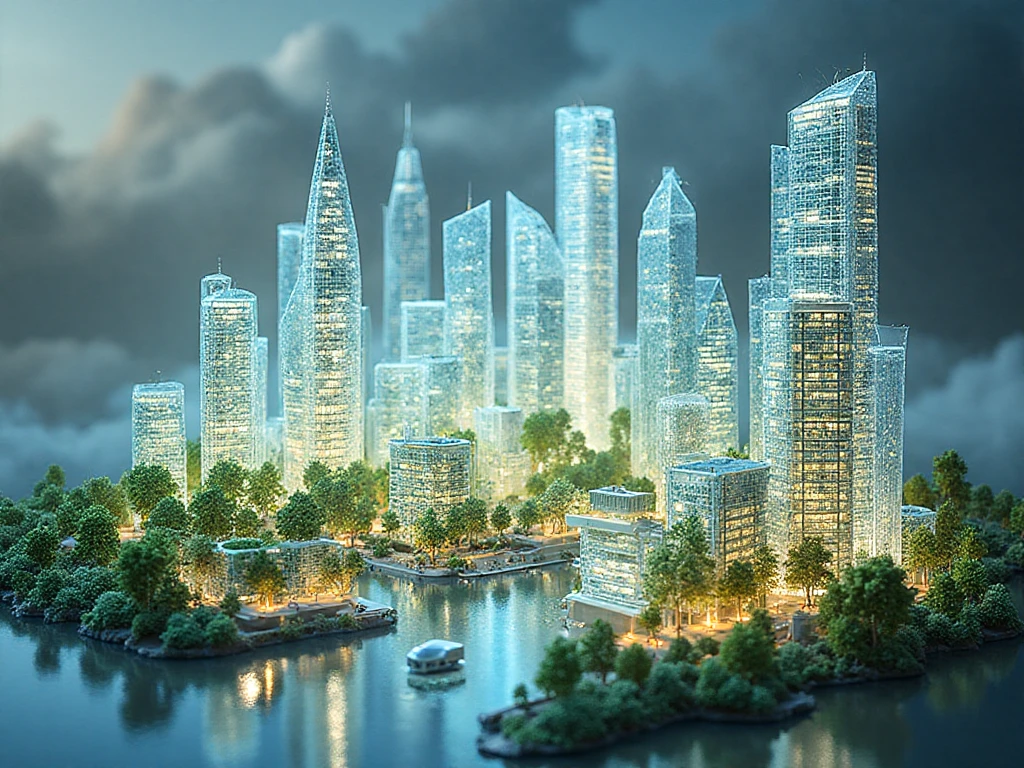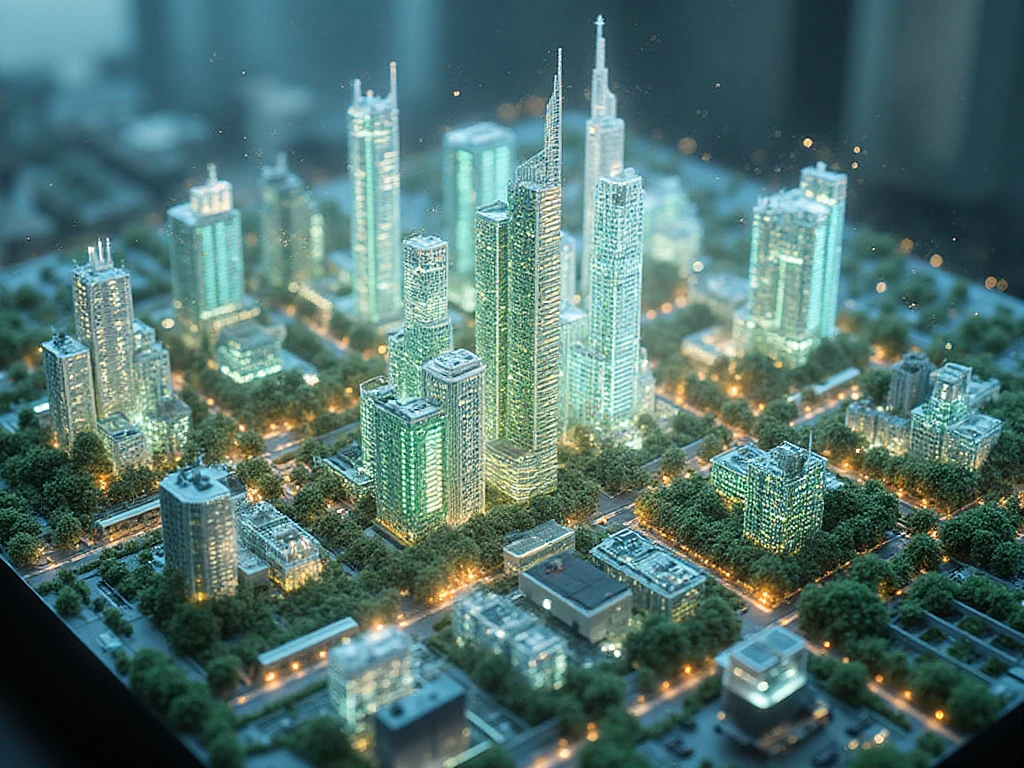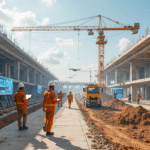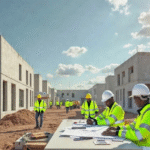What is Green Building Technology? Innovative Solutions for a Sustainable Built Environment
Green building technology is no longer a niche concept—it’s a global movement reshaping how we design, construct, and operate buildings. From eco-friendly construction materials to smart technologies that cut energy use, these innovations promise a built environment that is sustainable, healthier, smarter, and more cost-effective for generations to come.
Why Green Building Technology Matters Today
The global construction industry is under increasing pressure to balance growth with sustainability. Traditional building methods, though effective, often come with a heavy environmental price—massive energy consumption, excessive use of natural resources,
Green building technology refers to the use of advanced methods, materials, and systems that minimize the environmental footprint of construction while maximizing efficiency and comfort. By embracing these practices, cities can transition toward a sustainable built environment, supporting global climate goals and meeting the rising demand for healthier spaces.
But what exactly is green building technology in construction, and how is it transforming the industry? Let’s explore its principles, benefits, and innovative solutions powering future sustainable cities.
Understanding Green Building Technology
At its core, green building technology is about designing and constructing environmentally responsible and resource-efficient buildings. This involves every stage of the building’s lifecycle—planning, design, construction, operation, maintenance, renovation, and eventual deconstruction.
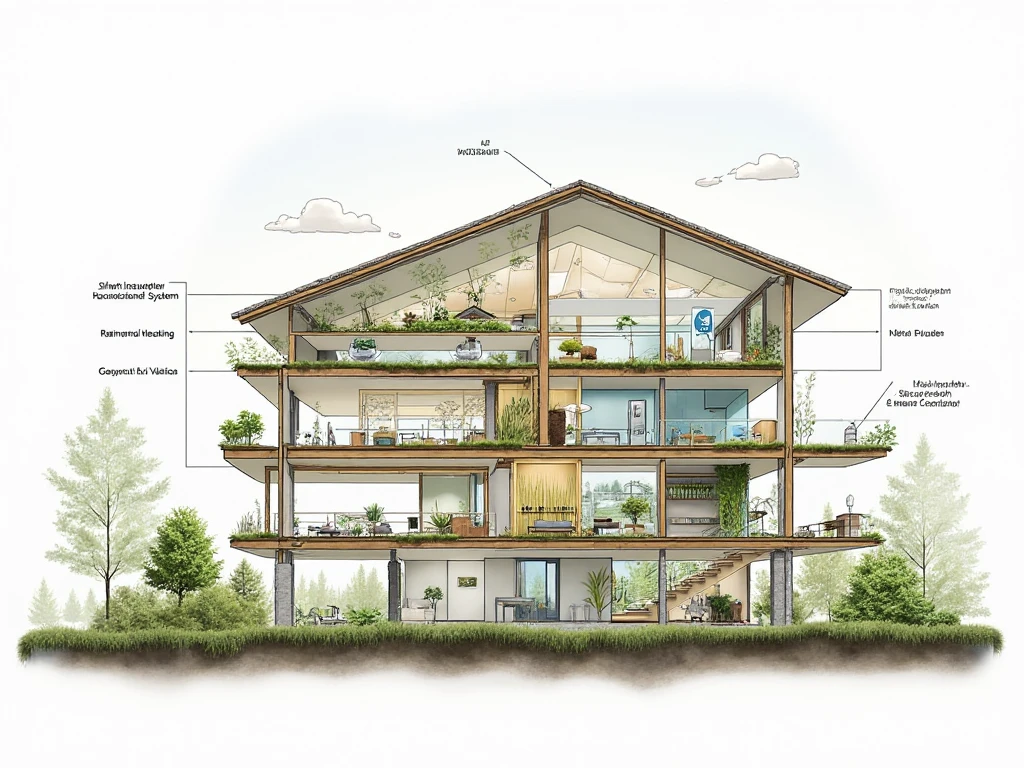
Core Principles of Green Building Technology
These principles demonstrate that green building is about reducing environmental impact and creating structures that enhance human well-being and economic efficiency. Have a look!
- Energy efficiency: Integrating renewable energy sources such as solar, wind, or geothermal.
- Water efficiency: Using rainwater harvesting, low-flow fixtures, and greywater recycling.
- Sustainable materials: Prioritising green building materials like bamboo, mycelium, cork oak, recycled steel, and eco-friendly concrete (hempcrete).
- Indoor environmental quality: Enhancing natural light, air circulation, and non-toxic finishes.
- Smart building technologies: Leveraging IoT systems to monitor and optimise real-time performance.
Benefits of Green Building Technology in Modern Construction
The benefits of green building technology extend far beyond environmental conservation. Developers, investors, and end-users are discovering that sustainable buildings are better. Some of the notable benefits include:
1. Lower Energy Consumption
According to the World Green Building Council, smart HVAC systems, energy-efficient lighting, and renewable energy integration can reduce energy usage by 30–50%. For example, One Angel Square in Manchester, UK, uses a double-skin façade and advanced heat recovery systems, cutting its energy demand significantly.
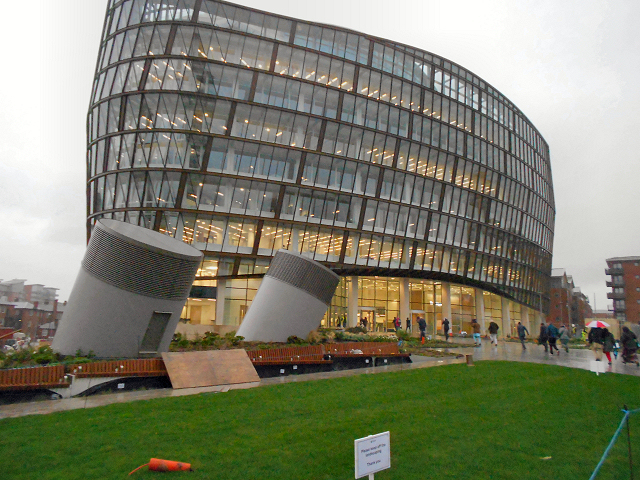
(The One Angel Square Building – Above)
2. Healthier Indoor Environments
Low-VOC paints, improved air circulation, and daylight optimisation create healthier spaces. Research by Harvard’s T.H. Chan School of Public Health shows that occupants in green-certified buildings report 26.4% higher cognitive function scores.
3. Environmental Protection
Green construction methods significantly cut CO₂ emissions, water usage, and waste production. LEED-certified buildings, for instance, use 11% less water and produce 34% lower greenhouse gas emissions on average.
4. Reduced Operational Costs
Although the initial costs of eco-friendly technologies may be higher, green buildings usually recoup these expenses within 5 to 10 years through savings on utilities and maintenance. The Britam Tower in Nairobi incorporates smart glass and natural ventilation systems, reducing cooling costs in Kenya’s warm climate.
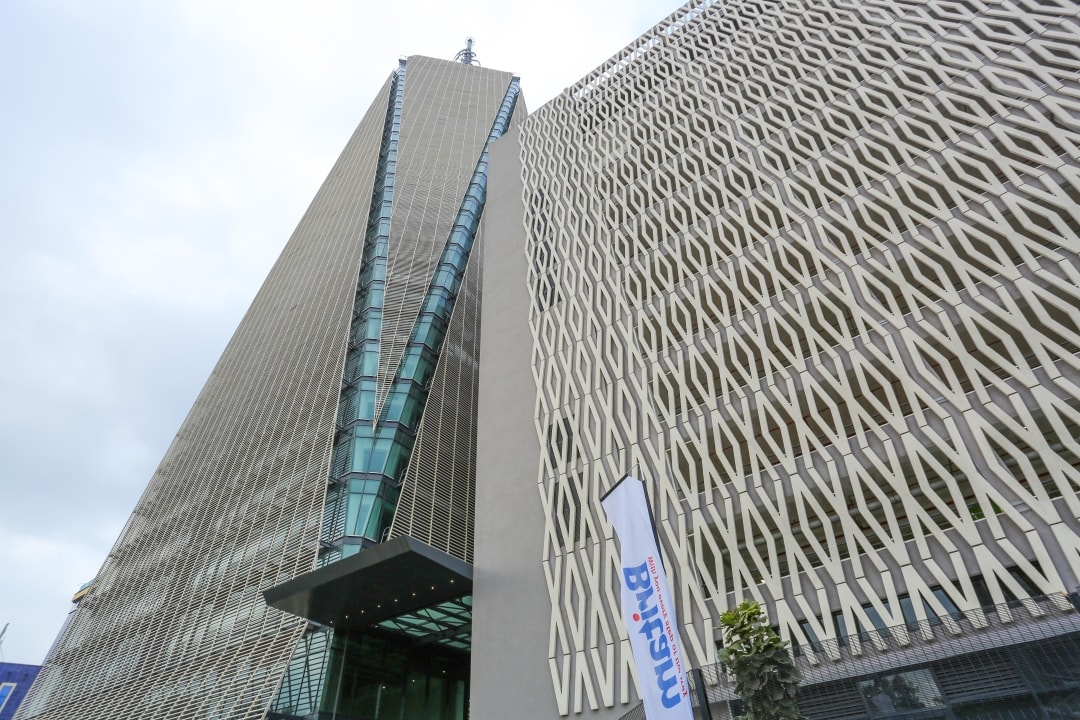
(The Britam Towers, Nairobi – Above)
5. Boosted Property Value
With growing awareness, investors and buyers are willing to pay a premium for sustainable real estate. Studies show green-certified properties enjoy 8–10% higher valuations than traditional ones.
Innovative Green Construction Technologies Transforming the Industry
The rise of sustainable cities depends on the widespread adoption of innovative green building technologies. Here are some leading examples:
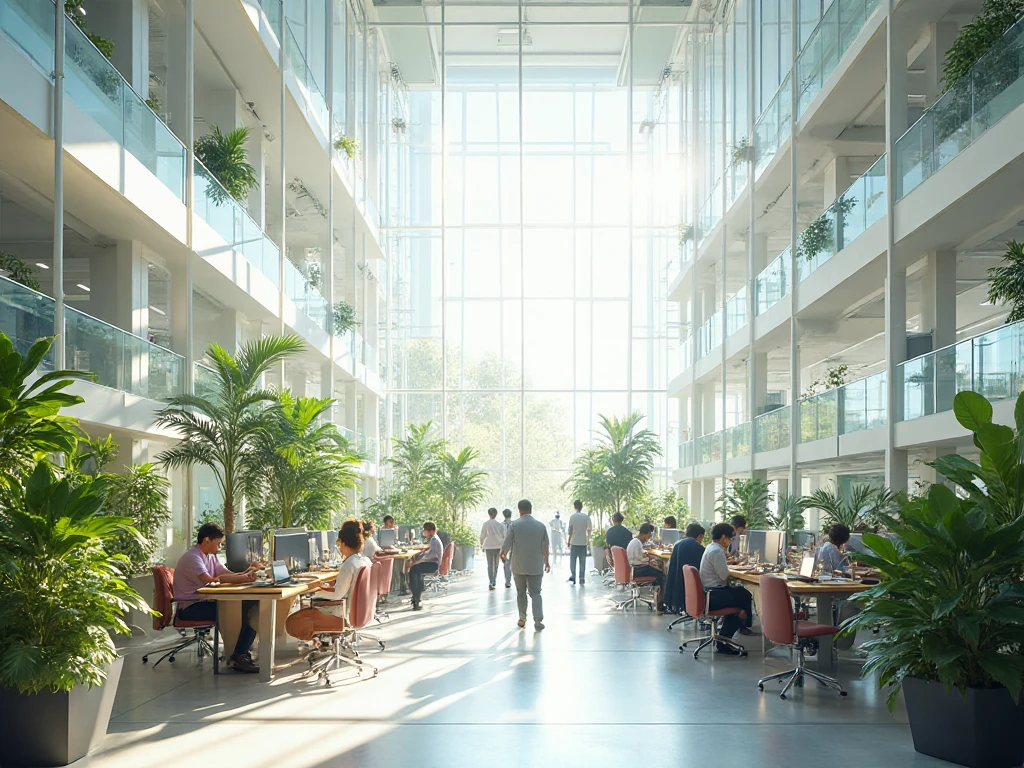
1. Smart Building Technologies
Smart sensors, AI-driven HVAC systems, and energy dashboards are redefining how buildings operate. Building managers can make instant adjustments that reduce waste and costs by tracking energy use in real time.
2. Sustainable Materials
Materials such as hempcrete, recycled steel, bamboo, and reclaimed wood are gaining traction as green building materials. They offer durability, reduce carbon intensity, and often outperform conventional alternatives.
3. Renewable Energy Integration
Solar panels, wind turbines, and geothermal heating systems are increasingly incorporated into building design. It reduces reliance on fossil fuels while enhancing energy independence.
4. Water Conservation Systems
Technologies like rainwater harvesting, permeable pavements, and greywater recycling ensure efficient water management, which is crucial in urban environments facing water scarcity, runoff infiltration problems, and melting snow.
5. Modular and Prefabricated Construction
Prefabricated components reduce waste, minimise site disruptions, and cut construction time, all while supporting ecofriendliness and adopting new construction technology.
Sustainable Solutions for the Built Environment
A sustainable built environment doesn’t just rely on one technology; it integrates multiple systems into a holistic approach. Cities worldwide are embracing green building technologies to create more resilient urban infrastructure.
For instance, Singapore’s Green Building Master Plan incentivises developers to prioritise sustainability, whereas the European Union’s Green Deal highlights clean energy infrastructure and energy-efficient building renovations.
Governments and private stakeholders can align economic development with environmental responsibility by applying sustainable solutions for the built environment.
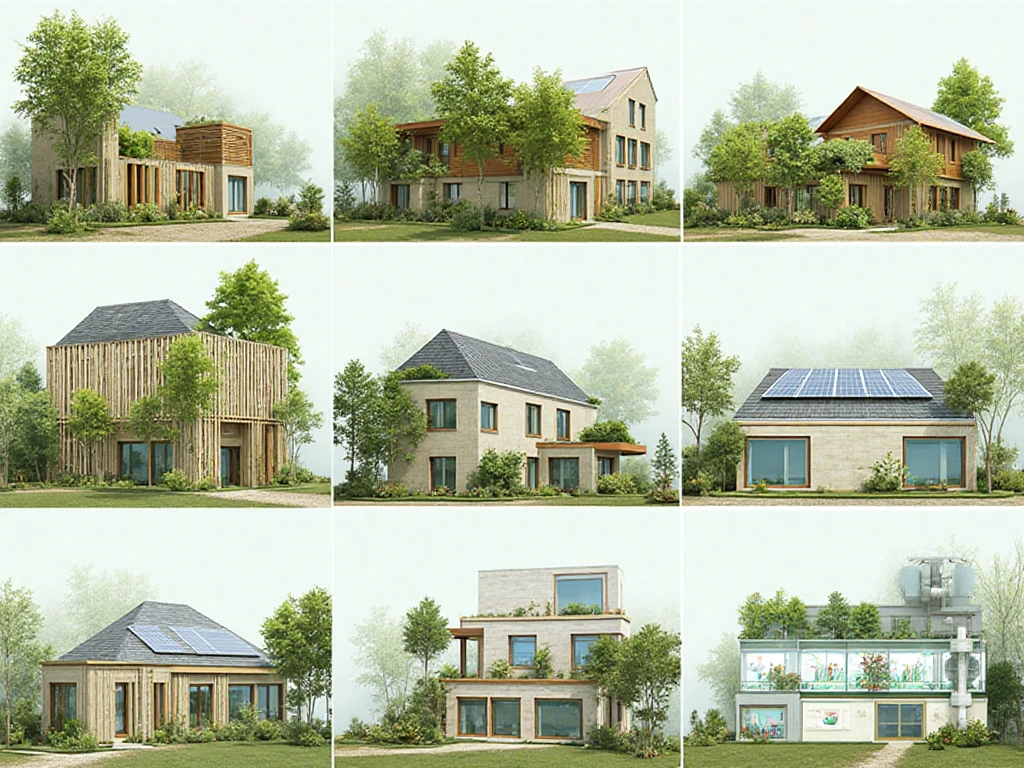
How Green Building Technology Reduces Environmental Impact
The construction industry is responsible for nearly 40% of global carbon emissions. By adopting innovative green construction technologies, we can drastically reduce this figure.
- Carbon reduction: Smart insulation and renewable energy reduce emissions.
- Resource efficiency: Recycling materials minimises the extraction of raw resources.
- Circular economy support: Reuse of materials extends product lifecycles, reducing waste.
The role of green building technology in construction is clear—it transforms buildings from passive resource consumers into active contributors to sustainability.
Future of Green Building Technology: Shaping Sustainable Cities
Eco-friendly and innovative technologies will dominate the future of construction, shaping the industry. Trends indicate a stronger emphasis on digital integration, net-zero buildings, and urban resilience. Emerging technologies, such as AI-driven construction planning, digital twins, and blockchain-based material tracking, have the potential to revolutionise our current green construction methods.
The future of sustainable cities depends on this evolution. Green building technologies, from skyscrapers with vertical forests to carbon-neutral communities, are at the heart of tomorrow’s urban planning. A good example of a city pioneering green technology and sustainable urban development is Kigali, with some notable public projects such as the Kigali car-free zone, a bold move towards a green city in Rwanda.
Investment Opportunities in Green Building Technology
As the demand for sustainability grows, so does the potential for investors. According to Grand View Research, the global green building materials market alone is projected to exceed USD 468.1 billion by 2030 and grow at a CAGR of 8.5% from 2025 to 2030.
Investment opportunities exist across:
- Renewable hydrogen power integration in building systems.
- Hydrogen infrastructure and distribution systems for large-scale facilities.
- Smart building technologies and energy management startups.
- Sustainable infrastructure projects in emerging economies.
For contractors, architects, and investors, aligning with green building technology is no longer optional—it’s a competitive advantage.
Conclusion: Building a Sustainable Future with Green Technology
Green building technology is more than a trend; it’s a fundamental shift in how humanity approaches construction. By combining eco-friendly construction technology, smart building solutions, and sustainable materials, we reduce environmental impact and create healthier, more resilient spaces.
The benefits of green building technology in modern construction are undeniable: lower costs, improved well-being, enhanced market value, and long-term sustainability. As innovation accelerates, embracing these practices is key to ensuring that our cities grow smarter, cleaner, and greener.
Powering the Next Era of Sustainable Construction
At ConstructionFrontier.com, we track the technologies, trends, and policies reshaping Africa’s and the world’s construction industries. Stay informed with insights into green building technology, renewable infrastructure, and sustainable solutions driving the future of construction. Explore our latest updates and join the movement toward a cleaner, more resilient built environment.

